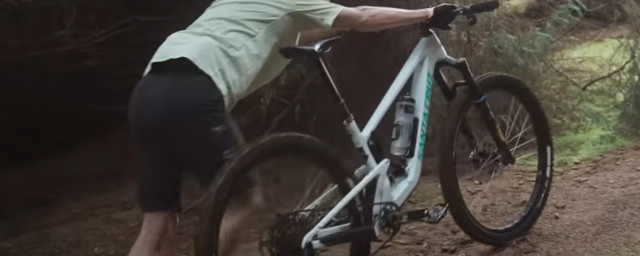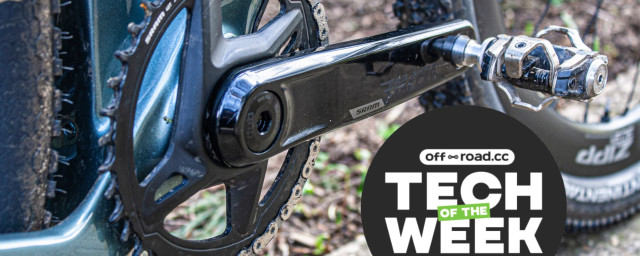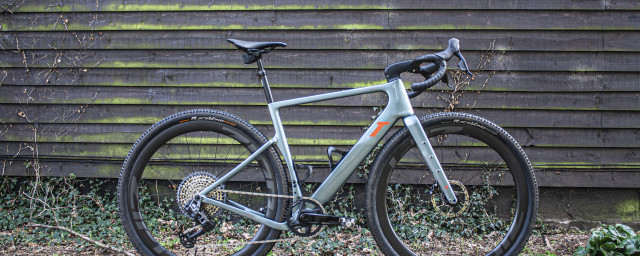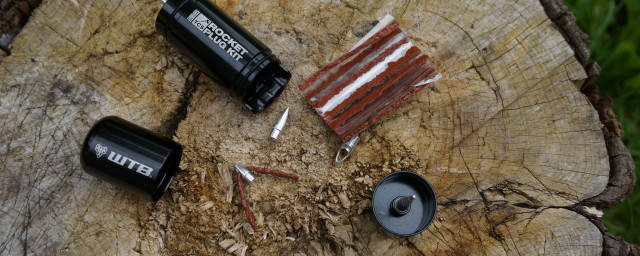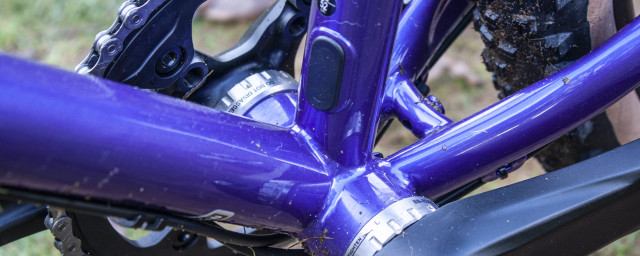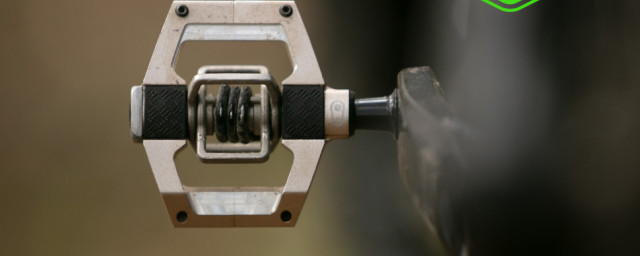The Liv Devote is one of the few women-specific gravel bikes available and the newest iteration has been made racier and more performance-oriented. Targeted at those wanting to dabble in gravel racing, it remains one of the best women-specific gravel bikes with an effective and direct ride quality. However, the below-average cockpit setup and poorly executed frame storage let down the overall package slightly.
- Gravel bike racing – everything you need to know
- Best gravel wheelsets 2023 - fast and furious off-road wheels
- Best gravel bikes 2024 - drop-bar bikes for off-road riding
Liv Devote Advanced 0 gravel bike - Technical details
Liv Devote is the women-specific brand's gravel machine and has had quite a significant revamp for 2024. With that update, the overall geometry got fully revamped and aligned with modern gravel bike trends, Liv introduced internal storage to the Devote, nestled in the downtube and the flip-chip dropouts, allowing for tailoring the wheelbase and tyre clearance to suit more riding preferences.
According to Liv, the storage system's water-resistant bag can store essential items such as inner tubes, CO2 cartridges, tyre levers, snacks or multi-tools. The compartment cover also doubles as a water bottle cage mount, bringing the total number of bottle mounts to three.
There are also cargo mounts on the fork legs and mounts for a top tube bag, catering for longer off-road excursions. While the previous Devote used a pretty hardy frame protection plate underneath its downtube, the new models come with a simple frame-protecting tape to shave off some grams.
There are seven models in the Liv Devote range: three aluminium-framed Devotes (starting at £1,299) and another three carbon-framed Devote Advanced models (my test bike sits in the middle of this range), one of which comes equipped with a dropper post and the range is topped with the Devote Advanced Pro (£5,599), that comes with SRAM Force AXS groupset and all-carbon finishing kit. The frame storage is reserved for the carbon-framed Devote Advanced and Devote Advanced Pro models.
The Devote Advanced 0 I tested comes with a Shimano GRX 2x groupset, pairing a 48-31T chainset with an 11-36T cassette. The bottom bracket is of the press-fit variety.
The Devote Advanced Pro and Devote Advanced models also boast the new Contact AeroLight Stem, which routes cables from the handlebars below the stem and down through the frame for a more streamlined and aerodynamic cockpit. The new-to-Devote Contact SLR XR D-Fuse handlebar has a five-degree back sweep and flare drop for a "comfortable and ergonomic grip". The Giant Contact SLR D-Fuse seatpost that comes as stock can be swapped out for any 27.2mm round seatpost or you can even fit in a 30.9mm mountain bike dropper post.
The wheels and tyres are also provided by Giant and its component brand Cadex, with the Devote Advanced 0 rolling on Giant CXR 2 hookless wheelset with 35mm depth and clad in Cadex AR tyres in 40mm width. Axles are both 12x142mm thru axle type, keeping wheel options plentiful.
Before getting to the actual ride feel of this bike, it's worth going through its geometry in more detail as this is where the new Devote has seen quite dramatic changes compared to the previous iteration. The obvious reason for the changed figures is the flip chip, which alters everything from the length of the wheelbase to the head and seat angle – depending on whether you ride on the long or short setting.
But overall, the second generation Devote has got a lot lower and longer. There are still four sizes available: XS, S, M and L (the Advanced Pro is not available in L). This range should cater for riders from 150cm tall to 180cm. But despite the same sizing, the 2024 Devote has little in common with the outgoing Devote in terms of the geometry figures - though some of this is counteracted by updated component choices. More on that later...
My size XS test bike has a reach of 380mm and a stack of 523mm in the short setting. This makes the stack 7mm lower than in the outgoing Devote, and the bike is also 2mm longer. The wheelbase is longer at 1,017mm (4mm more) and the head tube is 5mm lower at 90mm.
Then we have the trail figure, which on the XS Devote Advanced stands at 78.4mm (82 mm when in the long setting), compared to the outgoing 75.9mm. This is very much getting to mountain bike territory and explains some of the neutral steering feel this bike conveys, and the more generous trail figures seem to be the standard across the size range.
The head tube angle is also slacker at 70 degrees and the seat tube angle sits at 74.5 degrees. Both these figures are standard for this size bike, limiting toe overlap even on the smallest size frame due to the well-thought-out angles.
Compared to unisex bikes, Liv uses more steeply sloping top tubes. Though this is great for standover height, the slope comes with the downside of restricting space in the front triangle. I could just about fit a 700ml bottle in both cages but the cage on the seat tube needs to be a side-loader with that size bottle. And unfortunately, there is absolutely no space for a frame bag.
Liv Devote Advanced 0 gravel bike - Performance
Having ridden the first-generation Liv Devote for a good few months in 2022, even from London to Paris, I was excited to get my hands on the updated model and see how it stacks up against its predecessor. The previous iteration Devote was already a capable gravel bike, but the update promised more clearance and a racier nature. Thus, I was intrigued to see if the new version was significantly different and perhaps, better. And to a large extent, I wasn't disappointed.
With the second generation Devote, Liv has adopted some of the features that the unisex Giant Revolt received in 2021 – the flip-chip dropouts, D-Fuse handlebar and the D-fuse seatpost. With that, Liv has aimed to add more tyre clearance and comfort and succeeded in doing so.
With the flip chip and ability to take a dropper post, this bike is certainly geared as much toward adventure-style riding as it is for racing. With that, it's truly blurring the line between gravel and XC mountain bikes – especially with the dropper-post-equipped Advanced 1 model.
Though flipping the dropouts isn't complicated, it does take some basic mechanical skills and confidence and isn't something you will want to do between every ride. As you screw out the dropouts and also re-adjust the brake calliper each time, the time spent on the task is a good few minutes more than most of us are willing to spend on pre-ride maintenance.
But the positives of the flip-chip are unquestionable. As the flip affects the bike's wheelbase, it also alters its riding characteristics. I rode the Devote in the 'long setting' for most of my testing and found the bike very planted and confident at that. When swapping back to the 'short setting' I can't say that the difference was too noticeable but I think this is also because I didn't swap the tyres parallel to the bike length – and rather kept the 40mm Cadex' rubber on throughout the test period.
I'd say the effect of the longer/shorter wheelbase was more noticeable when I was riding more technical, twisty terrain. The shorter wheelbase made the bike a little nippier around bends and tight corners. On the flip side, the longer wheelbase added composure on faster descents through sweeping, gradual turns. If you flipped the chip to the long setting and put on some 50mm tyres, the difference in how the bike rides would certainly be ever more tangible.
Regardless of the wheelbase setting, the Devote is a bike that carries speed well and isn't shy to react to pushing up hills, either, especially in this relatively lightweight build.
Given the racy nature of Gen 2 Devote, I thought I'd like to try out how it feels in a little more aggressive setup and choose the XS frame size. I'd ridden the size Small on the previous model but, in contrast, the outgoing Devote was quite a tall bike and though I liked it for more endurance-based rides, it wasn't one to get low and fast on.
At 164cm tall, Liv's sizing would still place me on the size S frame and, though I could've possibly ridden that bike as well, I never felt the XS was too small for me (well, apart from the short stem, more on that later) and I was certainly not in too aggressive of a position.
That said, the sizing of the Devote is something that I'd suggest spending some time looking at if you are considering investing in this bike. That's because though the geometry numbers are different on the new Devote, Liv has essentially counteracted the longer reach by pairing the bikes with shorter stems – they now range from 50mm to 80mm whereas the old models got a range from 70 to 90mm. Whether this makes sense is probably down to your preference, because as I will elaborate later, I'd much preferred a longer stem on my test bike, especially with the stock cockpit.
What riding the smaller size frame allowed me to do, was to have more of the D-Fuse seatpost exposed. Liv claims the post to have up to 7mm of flex and I think some of the comfort I felt when riding the Devote can be attributed to that. The flexy nature is best noticeable when riding over something like speed bumps, where the give is tangible. But it's also the overall carbon frame that had compliance and vibration dampening built into it.
Smaller frames are inherently stiff but I found the Devote very forgiving when rolling over uneven surfaces, washboard gravel and rockier bits. It's not the smoothest and fastest bike around but it's not sluggish either. Compared to some other bikes aimed at a similar sort of riding - and I'd say the previous iteration Devote - this new creation is softer and hence, more comfortable. That might not equal sprinting excellence, but once this bike is up to speed, it holds momentum with ease.
When it comes to versatility, the number of mounts and that comfortable ride feel lend themselves well to making this bike a bikepacking companion when it's not your race rig. Because I got to hold on to the test bike a little longer, I also took it for a test equipped with road tyres. Aesthetically, the 30mm tyres fitted onto the large-clearance frame were not the most pleasing, but ride-wise I was very pleased with the way the bike rolled on slicker tyres. So if you're thinking of getting a bike that can do it all, I would consider the Devote a worthy option.
As nicely as the Devote rides, my biggest gripe with the whole bike comes with the cockpit. My size XS bike came with a 50mm stem, a 40cm wide handlebar with a 5-degree back sweep, and flared drops (meaning the drops sit wider than the tops). On paper all that doesn't sound too abnormal, yet I found myself quite frustrated with the shape of the bar. It isn't the flare or the backsweep that bothered me, but the general, sloping shape of the drops.
I appreciate well-shaped drops that cradle the hands securely, making sure you won't slip off the bar even on faster and bumpier descents. The D-Fuse handlebar didn't deliver that, but instead, I felt like I was just about to slip off the bars when riding on the drops, and if I had removed the grippy bar tape, that would have undoubtedly been the case.
This isn't exactly confidence-inspiring and in my opinion, defeats the purpose of the updated handlebars altogether. Could you just swap them? Yes, Liv has made swapping bars relatively easy – the 31.8mm diameter of the D-Fuse is pretty much the standard so you could choose something better shaped. But then again, you are paying for the handlebar as part of this bike…
Drop shape aside, I also found myself somewhat frustrated with the overall cockpit setup. The bar reach is relatively short at 72mm but the backsweep of the bar paired with a 50mm stem left me hitting my knees on the bars more than once. Granted this only happened when climbing out of the saddle, but it made me want a longer stem. But, with the integrated setup, this would've been more hassle than it was worth for the test period as the cables were measured for the 50mm stem.
Rounding up the finishing kit: the carbon Giant wheels were pleasant to ride – they were not too deep at 35mm for even the windier conditions and were stiff enough to aid accelerations, though with their three-pawl, 30T freehub they are not the best for technical riding where I would appreciate a quicker engagement from a freehub with more teeth and pawls. The 40mm Cadex AR tyres were a pleasant surprise as, despite their sleek look and lack of massive sine knobbles, they were grippy in corners and on most terrain apart from mud and grass. Despite their supple feel, they also turned out to be very durable and I experienced no punctures.
As it comes to shifting, the newest, 12-speed GRX RX-820 groupset is as reliable and intuitive to use as you'd expect it to be and I liked the redesigned hood design with more protuded grip lines to them. The gearing was plenty for most scenarios on gravel roads and though I'd spin out on faster road descents, this is the case with most gravel setups. I would also prefer a 1x setup but I suppose the gearing of a 2x is more versatile and there are 1x options available on the other Devote models.
One thing to note about the 12-speed GRX is that there is no 165mm crankset available, which meant that my tiny bike came with 170mm cranks. You could get the low-tier RX610 cranks if you wanted a shorter option, but that is something you'd have to negotiate with your dealer or do after purchase at an extra cost.
Then we have the internal storage. This is becoming more common on gravel bikes and when I tested the newest Canyon Grail CF SLX 8, I found myself very impressed with the solution that removed the need to remember to stash spares in my back pockets or strap on a saddle bag. The storage on the Devote is barely enough to store two Rice Krispies Squares, and anything more solid and chunkier was impossible to get in. I tried squeezing in a regular butyl inner tube (for 38-45mm tyres) and could not get that to even fit in the semi-waterproof pouch, let alone the downtube. So most of the time, the little pouch housed only my mini pump.
While the idea of the downtube storage is great, it really needs to be executed well and in this instance, I think it's barely very functional. At best, you could fit in a few patches and tubeless repair kit, and maybe some smaller snacks.
Liv Devote Advanced 0 gravel bike - Verdict
In terms of value, the Liv Devote Advanced 0 sits at a price point where competition is quite fierce. At £3,799, the Devote costs less than the Canyon Grail CF SLX 8 I tested last year, but that bike came with a GRX Di2 build and you could get the Grail CF SL 7 AXS for less at £3,349.
Looking at ride quality, the Devote is more compliant and when it comes to sprinting or pushing up a steep gradient it loses to the Grail's all-out efficiency. Then again, the compliance makes the Devote comfier on longer rides.
Another bike I've tested of similar spec is the Ribble Gravel SL Pro. The bike came with GRX Di2 again and, though the two are quite akin in terms of their geometry, I found the Liv to be more compliant and calm when riding over harsher terrain.
The overall Devote range does stock a plethora of spec and price points though, which makes choosing something that suits your budget easier. For example, if you are inclined to the rowdier gravel roads often, then the Devote that sits a step down from my test bike – the Devote Advanced 1 with SRAM Apex AXS groupset (£3,099) and a dropper post is worth a look.
In conclusion, the Liv Devote Advanced 0 is a versatile gravel bike built around women-specific considerations to the geometry and finishing kit. It's not perfect but it does cater for all levels of riders and, once you get your fit right, I do think it makes a "reliable partner for winding trails and multi-day trips," as Liv promises.
You might also like:
















